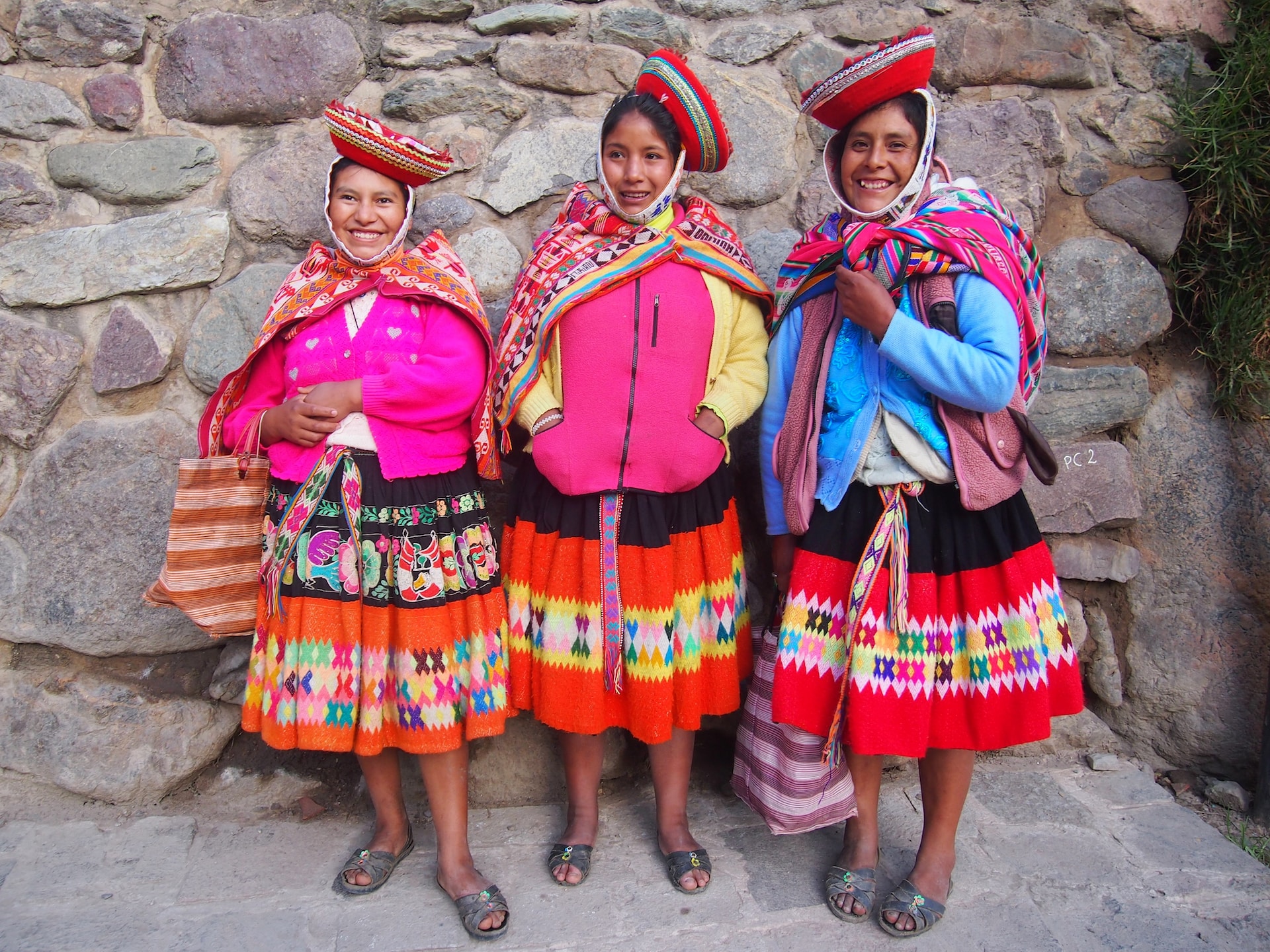Discovering a new country goes beyond visiting its landmarks; it involves immersing oneself in the culture, customs, and everyday life of the local people. Peru, known for its vibrant traditions, rich history, and flavorful cuisine, is a treasure trove of cultural experiences waiting to be explored. If you’re planning a wellness retreat in this diverse South American nation, you’re in for a treat. Combining wellness activities with cultural experiences allows you to deepen your connection with the country and its people, while nurturing your mind, body, and spirit.
In this article, we present 9 must-try cultural experiences in Peru. These aren’t just sightseeing tours; they offer hands-on, authentic interactions with Peru’s traditions, landscapes, and lifestyle. From exploring the relics of the Incan Empire in the Sacred Valley to immersing oneself in the lively culinary scene of Lima, these experiences will take you on a cultural journey across the country and through time, complementing your wellness retreat and enriching your understanding of Peru’s vibrant tapestry of life.
Visit indigenous and ancient Inca ruins
The Inca ruins in Peru are a window to a civilization that thrived hundreds of years ago. There’s a deep sense of awe and wonder one experiences when traversing the same stone paths where Incan royalty once walked, or marveling at the precision and beauty of the ancient architecture that has withstood the test of time.
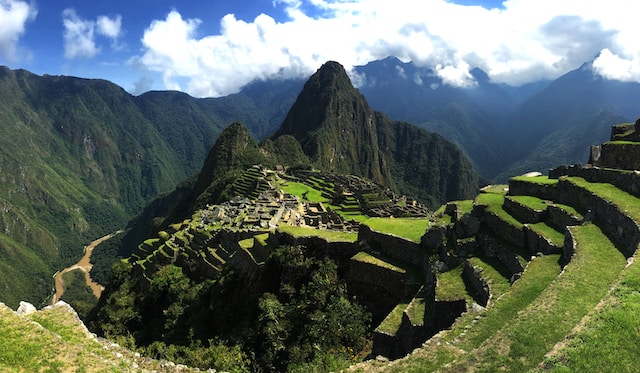
Visiting these historic sites on your wellness retreat can add immense value to your journey. First and foremost, the physical aspect of exploring these sites can be a form of exercise that promotes physical well-being. Many of the ruins require hiking to reach, often through stunning landscapes, providing a combination of cardiovascular exercise and grounding in nature.
Additionally, visiting these sites can offer mental and emotional wellness benefits. The act of exploration, learning about different cultures, and acknowledging the ebb and flow of human history, can lead to a sense of perspective, tranquility, and connectedness. The ruins also serve as a powerful reminder of human resilience and ingenuity, which can inspire personal growth and transformation.
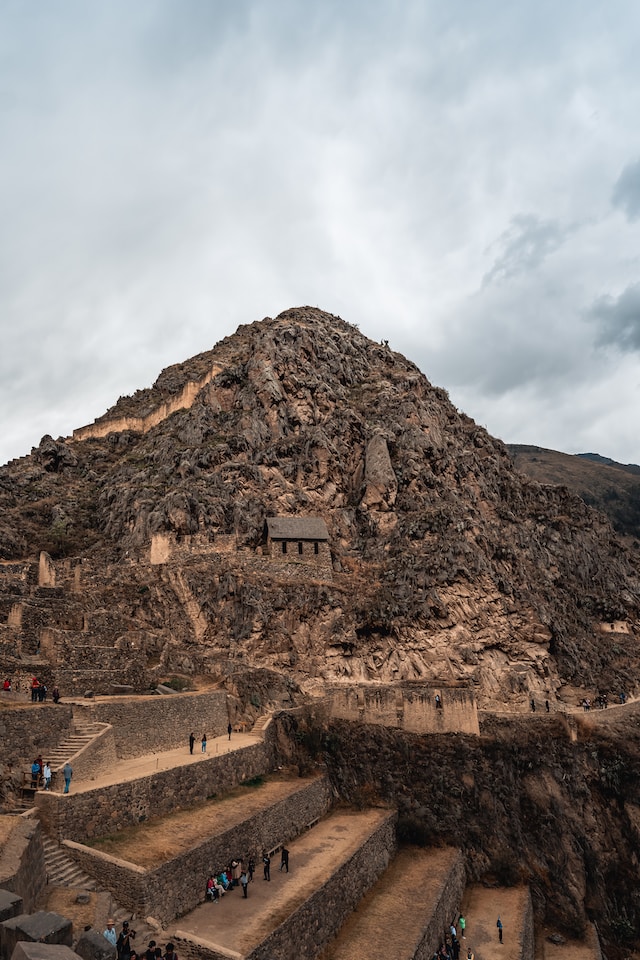
Here are a few options for visiting some of the many ruins in Peru:
- Machu Picchu: The most famous of all Inca ruins, it’s often accessed via the Inca Trail, a 4-day trek through beautiful mountains and cloud forests. If you prefer a less strenuous option, you can take a train to Aguas Calientes, the town at the base of Machu Picchu, followed by a short bus ride up to the site.
- Ollantaytambo: The Ollantaytambo ruins in Peru are a spectacular archaeological site in the Sacred Valley, featuring massive Incan terraces, temples, and fortifications. This site was known for its strategic military, agricultural, and religious significance during the Inca Empire. It’s also one of the only Inca towns still inhabited today.
- Pisac: The Pisac Ruins are a historical Incan site in the Sacred Valley of Peru, known for its impressive agricultural terraces, ancient temples, and residential buildings, offering panoramic views of the surrounding Andean landscapes.
- Choquequirao: Often referred to as the “sister” of Machu Picchu, Choquequirao is far less visited but equally impressive. It requires a challenging multi-day hike to reach, offering a peaceful and introspective journey.
- Saqsaywaman: The Saqsaywaman ruins are a colossal Incan fortress overlooking the city of Cusco, renowned for its impressive stonework, expansive terraces, and towers, embodying the architectural ingenuity of the ancient Inca civilization. Truly a sight to behold, from size to creation, you’ll be left speechless.
- Moray: The Moray Terraces in Peru are a unique archaeological site featuring concentric circular terraces, believed to have been an Incan agricultural laboratory used for experimenting with crops at different altitudes. A visit here is truly a pathway into the country’s brilliant past.
- Qoricancha: Qoricancha, also known as the Temple of the Sun, is a significant Inca site in Cusco, renowned for its exquisite stonework and historical significance as a major center of religious and astronomical observation in the Inca Empire. While the Spanish built over this important location, you can still see the remnants, and more importantly, significance, it held to the Incan world.
Family dinner in a local home
Enjoying a meal with a local family in Peru is more than just a culinary experience; it’s a doorway into the rich tapestry of Peruvian culture and traditions. Meals in Peru often revolve around family and community, and they provide an opportunity for storytelling, connection, and celebration.
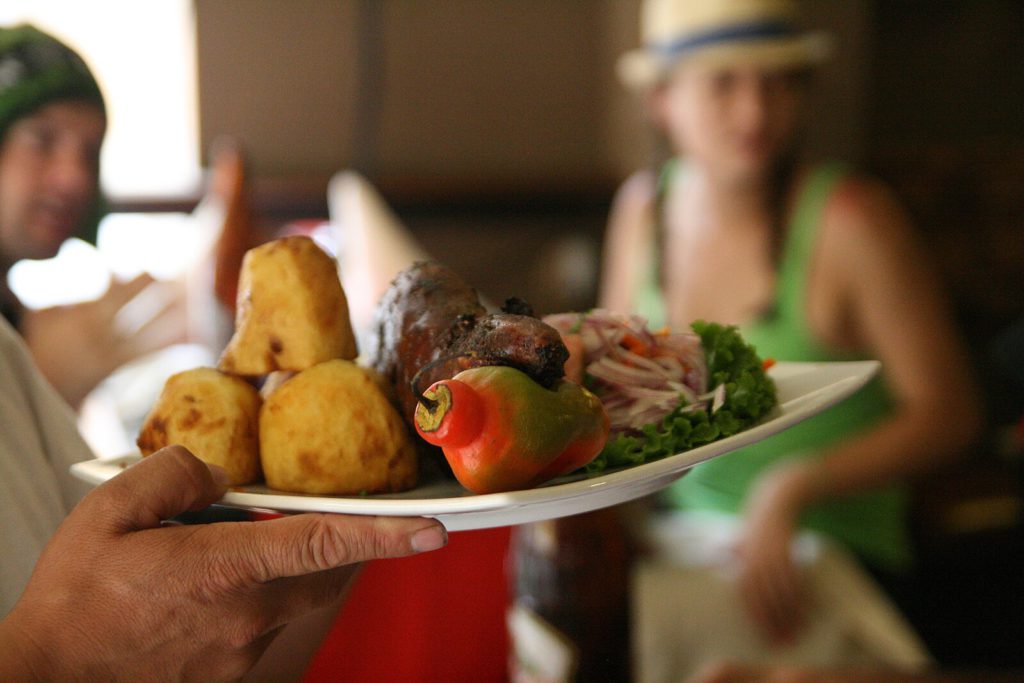
By dining with a local family, you have the chance to immerse yourself in Peruvian traditions firsthand. You may see how generations-old recipes are prepared, learn about the regional and familial significance of different dishes, and enjoy the warmth and hospitality that are hallmarks of Peruvian culture. This cultural exchange can bring a sense of connectedness and shared humanity, contributing to your emotional wellness and overall retreat experience.
As for the food, Peru has one of the most diverse cuisines in the world, with regional variations from the coast to the Andes to the Amazon. Here are a few dishes that you might encounter in a local home:
- Cuy: Cuy, also known as guinea pig, is a traditional celebratory dish cooked up in Peru. It’s an honor to partake in a feast with this local delicacy that has a history dating back thousands of years.
- Ceviche: This is Peru’s most famous dish, made from fresh, raw fish cured in citrus juices, and spiced with ají peppers, onions, and cilantro. It’s traditionally served with sweet potato and choclo, a type of large-kernel corn.
- Lomo Saltado: A classic Peruvian stir-fry that reflects the influence of Chinese immigrants. It combines marinated strips of beef with onions, tomatoes, peppers, and fries, all stir-fried together and often served with rice.
- Aji de Gallina: A delicious, creamy dish made with shredded chicken covered in a sauce made from yellow Peruvian chilies, cheese, and evaporated milk, it’s often served with rice and boiled potatoes.
- Pachamanca: In the Andean regions, this special dish made of meats, tubers, and corn cooked in an earthen oven using hot stones is a true community event. This is another privileged experience to witness with traditions that transcend time.
Textile weaving demonstration
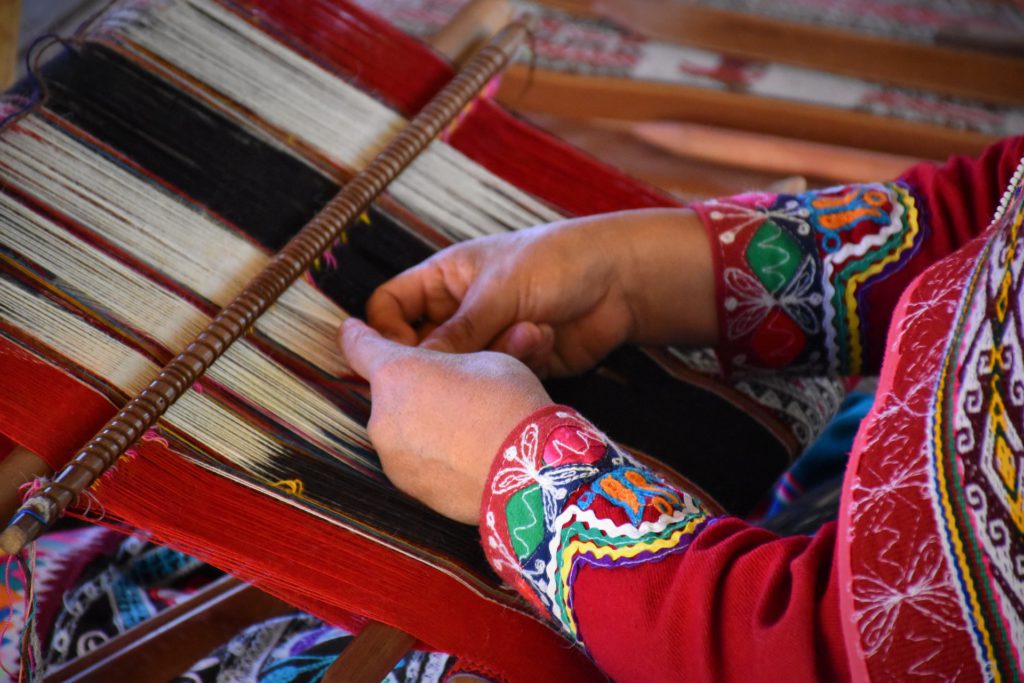
Textile weaving is a significant cultural tradition in Peru, with a history dating back before the Incan civilization. It’s an art form passed down from generation to generation, deeply ingrained in the daily life and traditions of Peruvian people, particularly in the Andean highlands. Each woven piece tells a story, often reflective of the weaver’s life experiences and the natural environment around them.
Experiencing a textile weaving demonstration provides a hands-on understanding of this intricate craft. Observing local artisans as they manipulate the loom, one gains a deep appreciation for the skill, patience, and creativity required. Each piece takes days, sometimes weeks, to complete, making it a tangible representation of dedication and resilience. As part of a wellness retreat, engaging in such a demonstration can promote mindfulness and appreciation for the beauty and diversity of human expression.
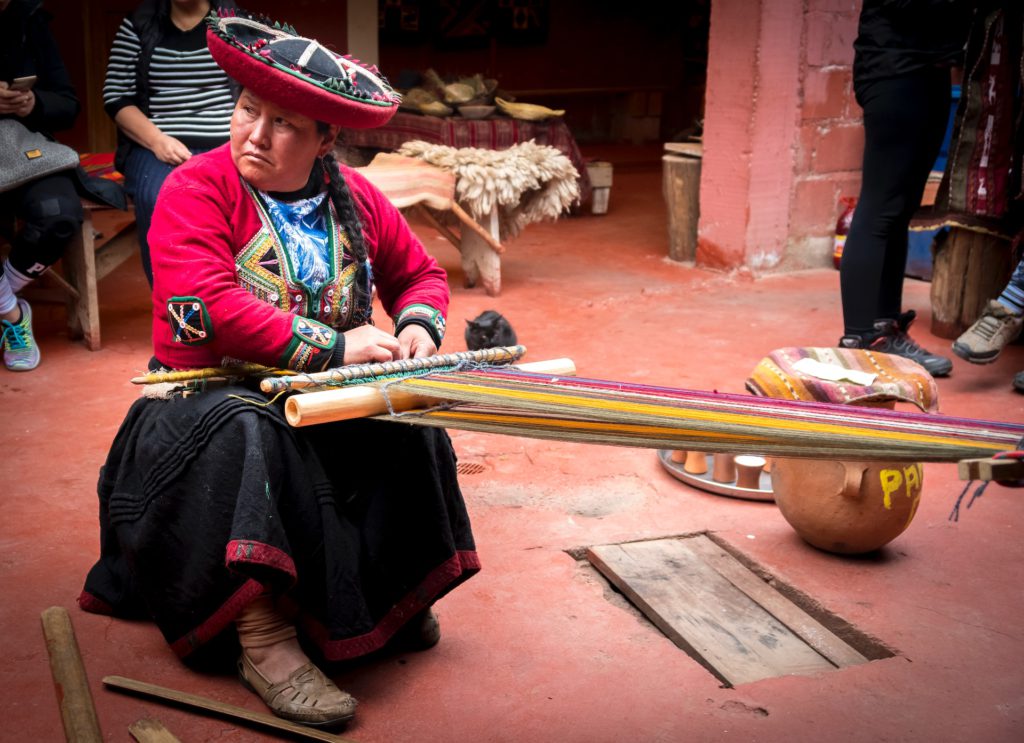
In terms of cultural significance, these textiles are not just functional items, but also symbols of identity and social status. The patterns, techniques, and colors used vary between communities, and they can indicate the region the weaver comes from, their community’s traditions, and even personal stories.
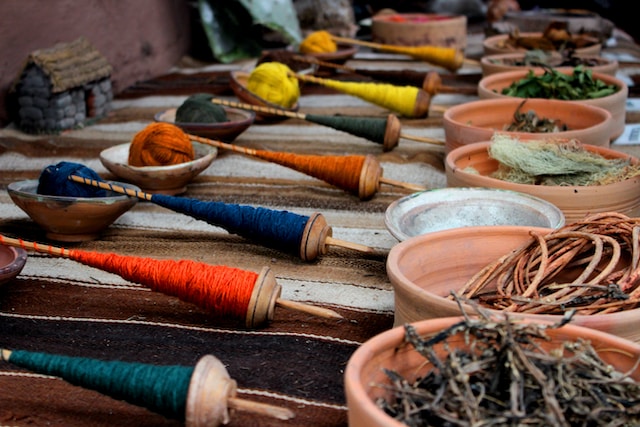
By experiencing a weaving demonstration, you are not only learning about an ancient craft but also supporting local communities to preserve their traditional arts and livelihoods, making it a meaningful addition to your wellness retreat in Peru.
Participate in a cooking class
Taking a cooking class in Peru is a unique opportunity to delve deeper into the country’s rich culinary culture. Recognized worldwide for its diversity and fusion of flavors, Peruvian cuisine is an essential part of the country’s identity and history. Each dish carries a story, a tradition, or a particular regional touch that makes it unique.
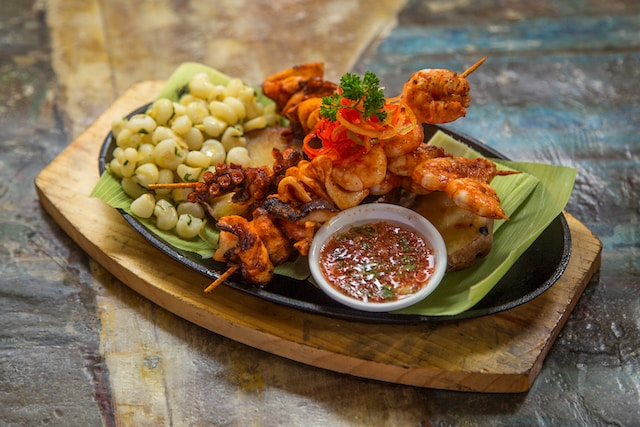
As for cultural significance, Peruvian cuisine is central to social life in Peru. It’s common for families to spend hours preparing meals and eating together. Traditional recipes have been passed down through generations, preserving culinary heritage.
Additionally, in recent years, Peru has been recognized as a top culinary destination globally, with Lima often dubbed the “Gastronomic Capital of the Americas.” This has led to a renewed sense of pride and interest in local culinary traditions. From street food to Michelin star restaurants, you can find it all in this incredible country.
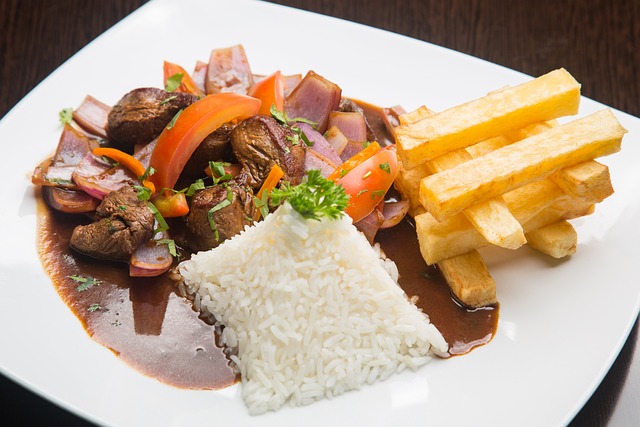
Cooking classes are offered across the country, with many options in Lima and Cusco. They range from professional culinary institutes to more casual, hands-on experiences in local homes or farms in the Sacred Valley.
By engaging in a cooking class, you are connecting with a vital part of Peruvian culture and adding a fulfilling and delightful experience to your wellness retreat.
Coca leaf ceremonies and readings
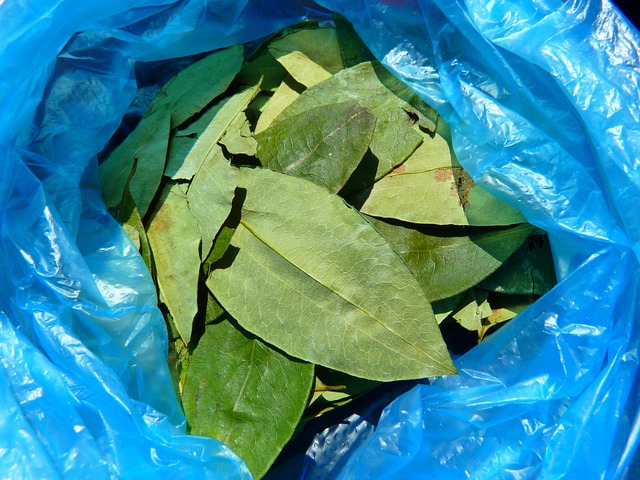
Coca leaves have been an integral part of Andean culture in Peru for thousands of years. They were considered sacred by the Incas and were used in various religious and social rituals. Besides their spiritual significance, coca leaves are also known for their medicinal properties and their ability to combat altitude sickness — a key reason why they are widely used in the high-altitude regions of Peru.
Historically, coca leaves have been used for divination, as offerings to the Apus (mountain spirits), or as a medium in social interactions. They are seen as a means of communication with the spiritual world, and are often offered to Pachamama, the Earth Mother, in gratitude for the life-sustaining resources she provides.
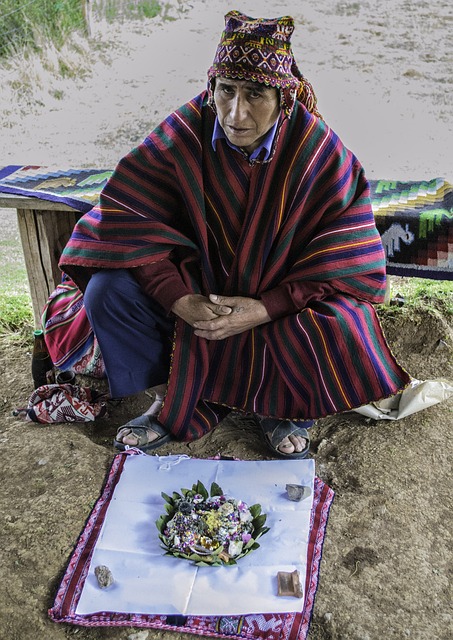
For tourists visiting Peru, engaging in coca leaf rituals and ceremonies can offer a deeper understanding of Andean cosmology and the cultural significance of this plant. Here are a few examples:
- Coca Leaf Readings: Some Andean shamanic practitioners offer coca leaf readings, a form of divination that provides guidance or insights about one’s life. In this ceremony, you will typically ask a question, and the shaman will cast coca leaves onto a cloth, interpreting the patterns they form.
- Pachamama Offering: Participating in a Pachamama (Mother Earth) ceremony is another way to experience the cultural importance of coca leaves. During the ceremony, a shaman leads participants in making an offering (or “despacho”) to Pachamama, which often includes coca leaves along with other symbolic items like seeds, sweets, and flowers.
- Chewing Coca Leaves or Drinking Coca Tea: In many regions of Peru, it is common for locals to chew coca leaves or drink coca tea, especially to cope with the effects of high altitude. While not a ceremony or ritual per se, joining in this traditional practice can be a form of cultural participation.
Participating in these rituals and ceremonies is not only a way to engage with Andean culture, but it can also add a spiritual dimension to your wellness retreat. As always, it is essential to approach these practices with respect and openness, guided by local experts who can ensure an authentic and respectful experience.
Visit Lake Titicaca and the Uros floating islands
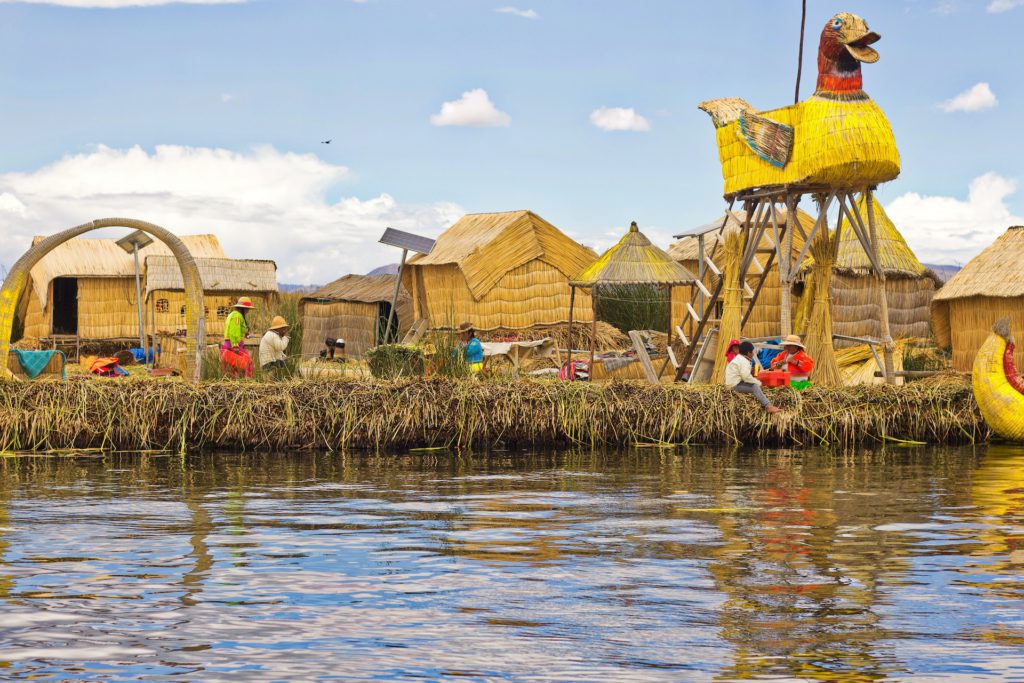
Lake Titicaca, located on the border of Peru and Bolivia, is the world’s highest navigable lake and holds a special place in Andean mythology. According to Inca legend, the sun god Inti sent his children, Manco Capac and Mama Ocllo, to rise from the waters of the lake and found the Inca civilization. This sacred status makes Lake Titicaca a place of profound spiritual importance.
Visiting Lake Titicaca and the Uros floating islands offers numerous benefits:
- Cultural Immersion: The Uros people have lived on these self-fashioned floating islands for centuries, preserving a way of life that remains closely tied to nature. They construct the islands, their homes, and their boats from the totora reeds that grow in the lake.
- Historical Learning: Visiting the lake allows you to learn about the ancient cultures of the Andes, the myths and legends surrounding Lake Titicaca, and the unique way of life of the Uros people.
- Natural Beauty: The scenic beauty of the lake, with its deep blue waters set against the backdrop of the Andean mountains, provides a sense of tranquility and awe, promoting mental wellbeing.
- Interaction with Local Communities: By taking a boat ride to the Uros islands, you can interact with the local communities, learn about their customs and traditions, and support their economy through ethically made, locally sourced crafts.
- Mindfulness and Spirituality: The peaceful atmosphere of the lake and its spiritual significance in Andean culture offer opportunities for reflection and mindfulness, enhancing your wellness retreat experience.
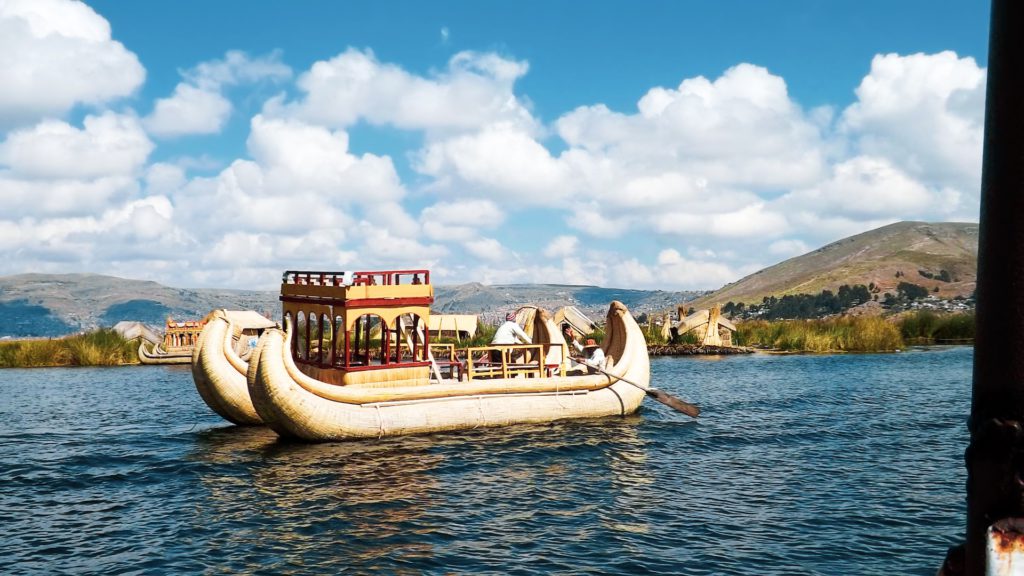
Tourists can visit other islands on Lake Titicaca as well, such as Taquile and Amantaní, which are known for their handicraft tradition and community-based tourism. These islands offer a glimpse into traditional Andean life, where ancient customs and communal cooperation continue to thrive.
Visiting Lake Titicaca and the Uros floating islands offers a unique blend of cultural immersion, natural beauty, and historical learning, enriching your wellness retreat and leaving you with lasting memories and insights.
Shop in the Pisac Market
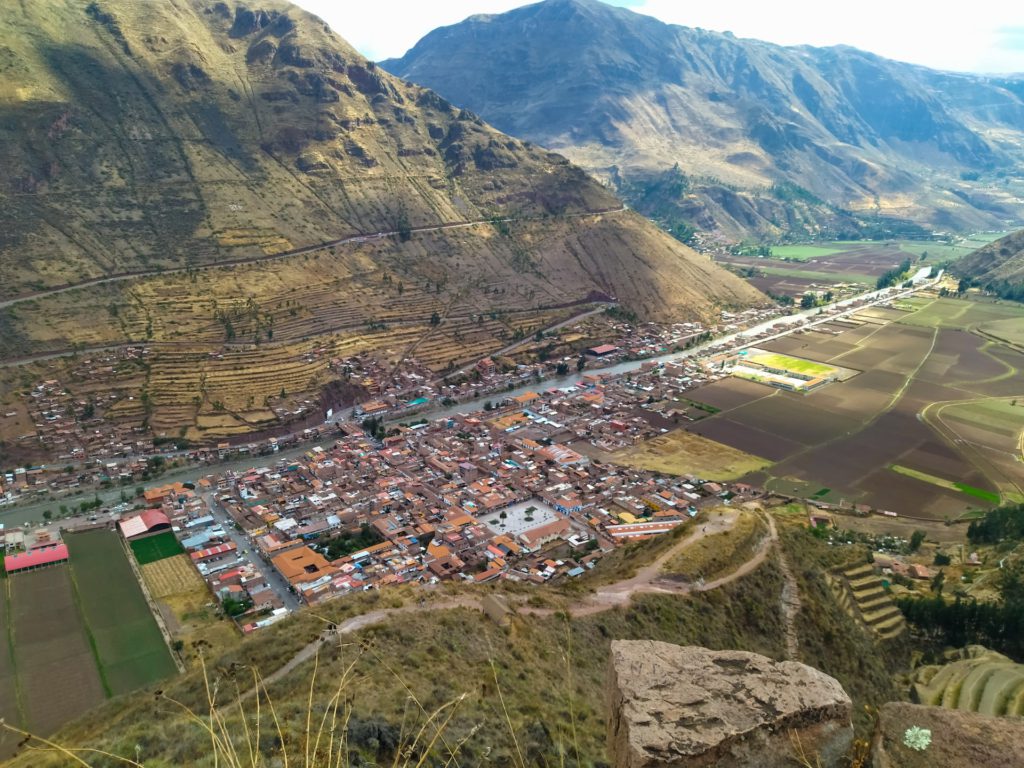
The Pisac Market, located in the Sacred Valley of the Incas, is one of Peru’s most famous markets. Known for its vibrant display of handicrafts, textiles, jewelry, and local produce, it offers wellness retreat groups an immersive cultural experience with numerous benefits:
- Supporting Local Economy: Shopping at the Pisac Market allows you to support the local artisans and farmers, many of whom rely on the income from selling their goods. Purchasing their products helps sustain traditional crafts and agricultural practices.
- Cultural Immersion: The Pisac Market is a living example of Andean culture. It’s a place where locals come to trade and socialize, offering you a chance to observe and participate in these daily cultural interactions.
- Authentic Souvenirs: The market is an ideal place to find unique, handmade souvenirs. From intricately woven textiles and beautiful pottery to silver jewelry and traditional musical instruments, the items for sale reflect the rich artistic traditions of the region.
- Experiencing Local Flavors: The Pisac Market also offers a variety of local food products and street foods. You can sample exotic fruits, fresh-baked bread, local cheeses, and more, offering a taste of the region’s culinary richness.
- Mindful Shopping: Unlike the rushed nature of modern shopping, browsing through the Pisac Market encourages a more mindful, leisurely approach. You can take the time to appreciate the craftsmanship, learn about the stories behind the items, and interact with the artisans.
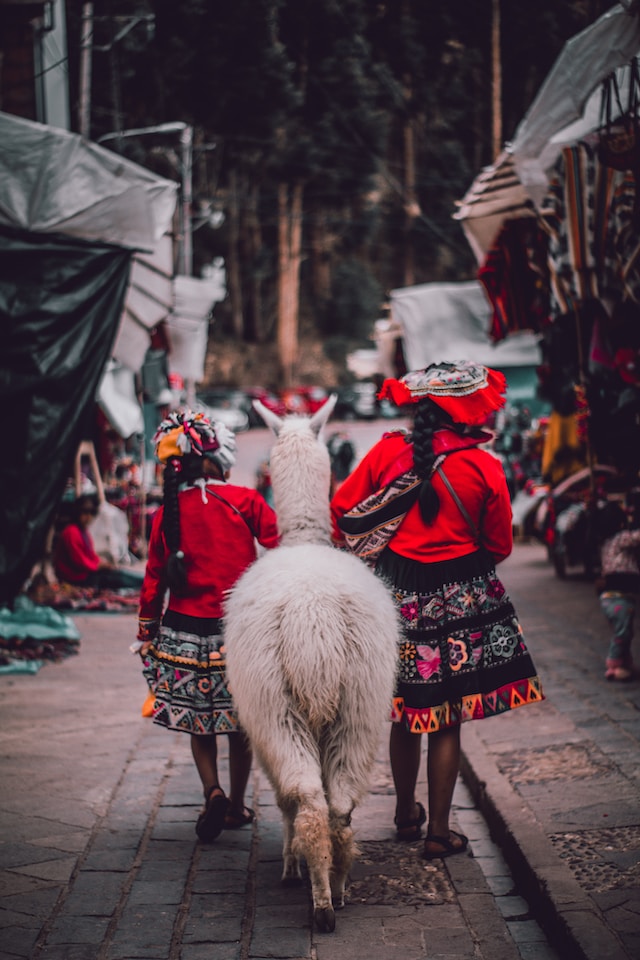
From a cultural significance perspective, markets like the one in Pisac have been a central aspect of Andean life for centuries. They serve not only as commercial hubs but also as important social and cultural gathering places. Many of the designs and techniques seen in the textiles, ceramics, and other crafts have been passed down through generations and reflect the region’s pre-Columbian and colonial history.
By shopping at the Pisac Market, wellness retreat groups can engage directly with local culture, enrich their understanding of Peru’s artistic traditions, and contribute to the local economy. It’s a colorful, lively experience that adds a unique element to any wellness retreat itinerary.
Stay overnight in the Amazon
Staying overnight in the Peruvian Amazon is an experience that can deeply enrich your wellness retreat. The Amazon rainforest, often referred to as the ‘lungs of the Earth,’ covers more than half of Peru and is one of the most biodiverse regions in the world. It’s also home to numerous indigenous communities who have been stewards of this ecosystem for millennia.
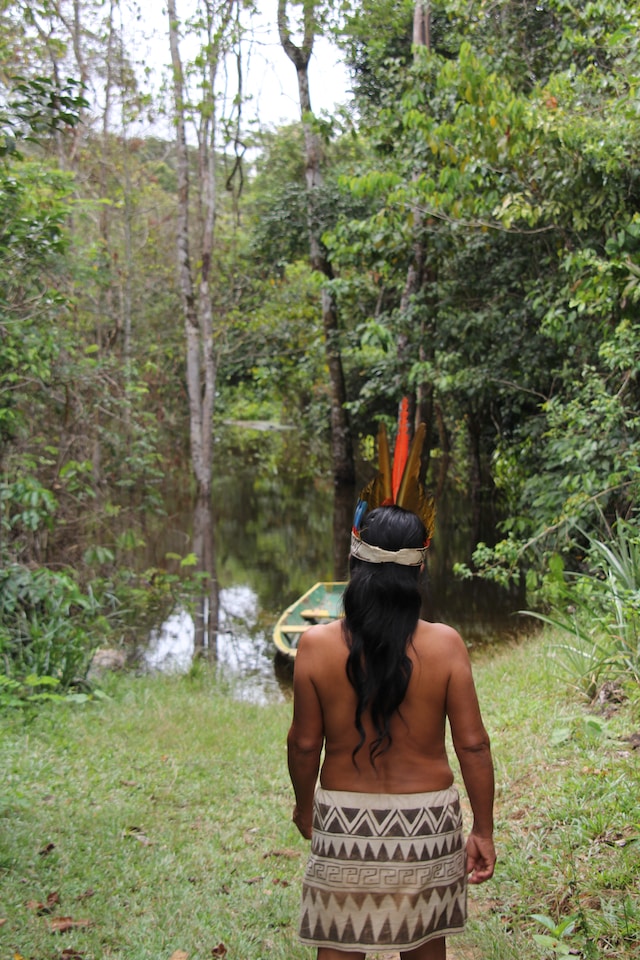
Here are some of the benefits of an overnight stay in the Amazon:
- Connection with Nature: The Amazon rainforest is a sensory-rich environment filled with diverse plant and animal life. Staying overnight allows you to tune into the rhythms of nature, promoting relaxation and mindfulness.
- Learning about Biodiversity: The Amazon is a treasure trove of unique flora and fauna. An overnight stay provides opportunities to learn about these species and their role in the ecosystem, broadening your understanding of the interconnectedness of life.
- Cultural Immersion: Many wellness retreats in the Amazon incorporate interactions with local indigenous communities. These interactions can involve participating in traditional rituals, learning about medicinal plants, or understanding the communities’ relationship with the forest. This can deepen your appreciation of diverse cultures and ways of life.
- Sustainability Awareness: Witnessing the grandeur of the Amazon rainforest can foster a deeper understanding of the importance of sustainability and conservation, which is increasingly significant in today’s climate-conscious world.
- Adventure and Exploration: From river cruises to jungle treks, the Amazon offers a variety of adventures. Experiencing these activities can add an element of excitement and challenge, fostering personal growth and resilience.
In terms of cultural significance, the Amazon rainforest is central to many indigenous mythologies and worldviews. For these communities, the forest is not just a resource, but a living entity with which they have a deep and reciprocal relationship. This perspective can offer profound insights for those seeking a deeper connection with nature as part of their wellness journey.
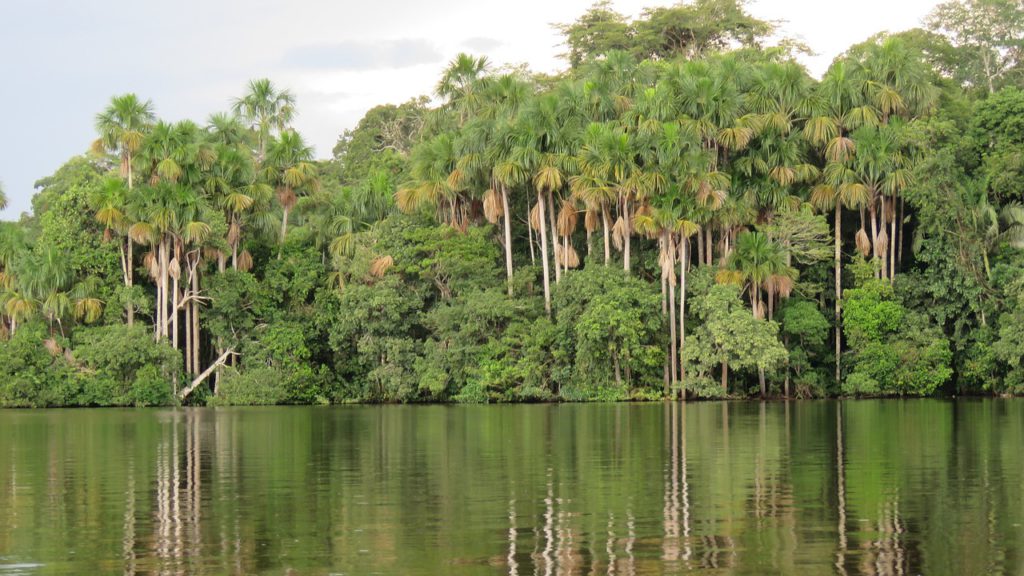
However, it’s crucial that any visit to the Amazon is carried out responsibly, with respect for local cultures and the environment. Choose tour operators who prioritize sustainability, respect for indigenous rights, and give back to the local communities.
Fly over the Nazca lines
The Nazca Lines are a collection of hundreds of geoglyphs or ‘earth drawings’ etched into the high desert sand of southern Peru. Dating back to the Nazca civilization between 500 BC and 500 AD, these massive figures depict various animals, plants, and geometric shapes, many of which are best appreciated from an aerial viewpoint due to their size.
The lines cover an area of nearly 1,000 square kilometers. Flying over these sprawling geoglyphs allows you to fully appreciate their scale and intricacy. It’s an unforgettable experience to witness these mysterious figures from the air, a viewpoint that was seemingly impossible during the time they were created.
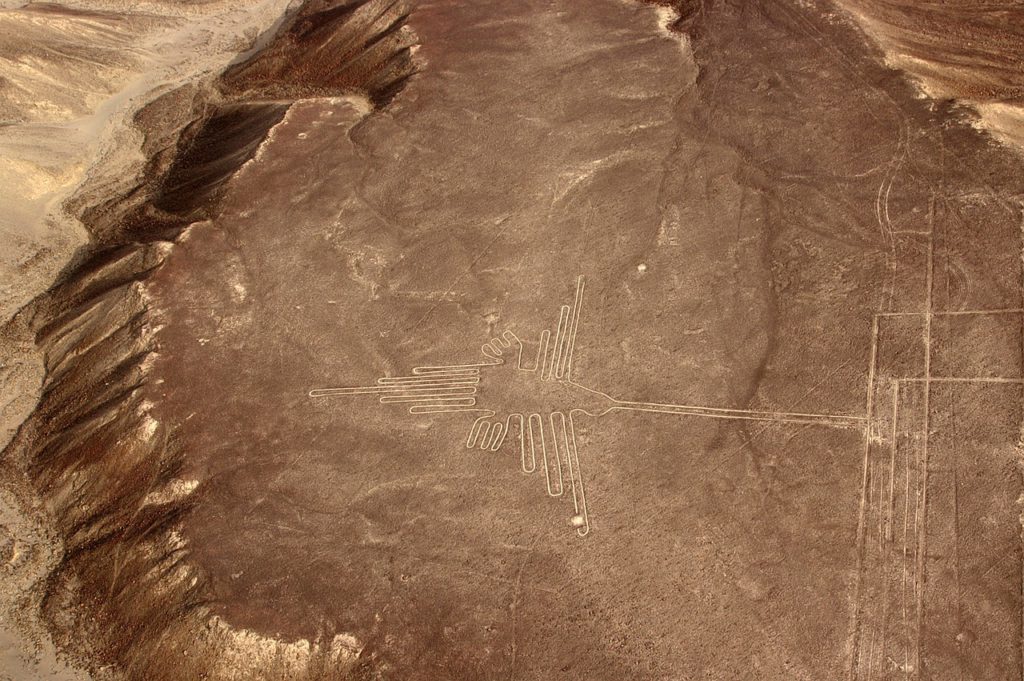
The area offers insight into the advanced understanding of geometry and astronomy possessed by the Nazca people. Some researchers believe these lines might have had astronomical purposes or been part of a ritualistic calendar. They are a testament to the rich cultural heritage of Peru and its ancient civilizations. They have been designated a UNESCO World Heritage Site for their cultural importance and the insight they provide into the ancient Nazca civilization.
The flight over the Nazca Lines is not only an opportunity to witness one of the world’s greatest archaeological enigmas but also a thrilling adventure. This small-plane ride is a once-in-a-lifetime experience that adds an element of excitement to your wellness retreat.
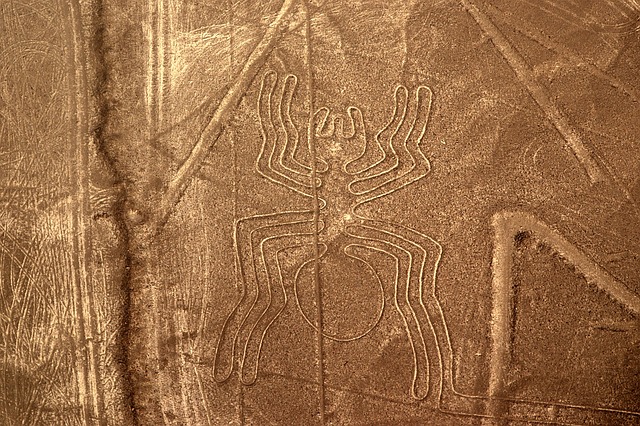
The Nazca Lines have been a subject of intrigue and fascination for researchers and tourists alike. Being able to witness these enigmatic figures can ignite your imagination, promote introspection, and provide a unique perspective on human creativity and cultural expression.
Remember, as these lines are a treasured archaeological site, it’s important to choose a tour operator committed to their preservation.
Interested in becoming a retreat host and getting paid to do what you love? Start planning here!
About TourHero
TourHero is a social travel platform that enables you to travel with like-minded people and fall in love with the journey. We work closely with handpicked local operators to ensure every experience curated is unique and exclusive to your travel group. Come with us on epic adventures and create memories that last a lifetime. Get started here!
